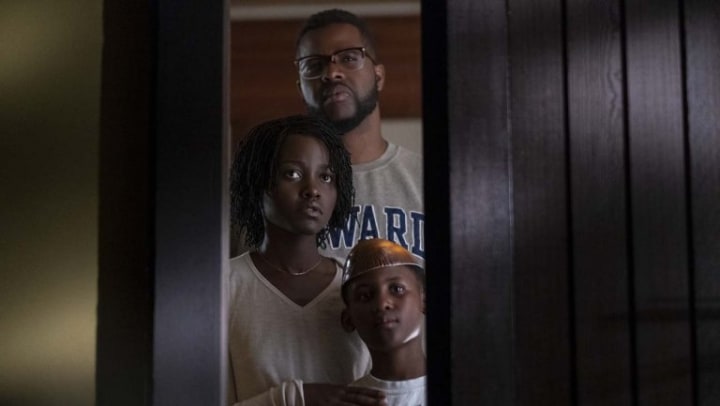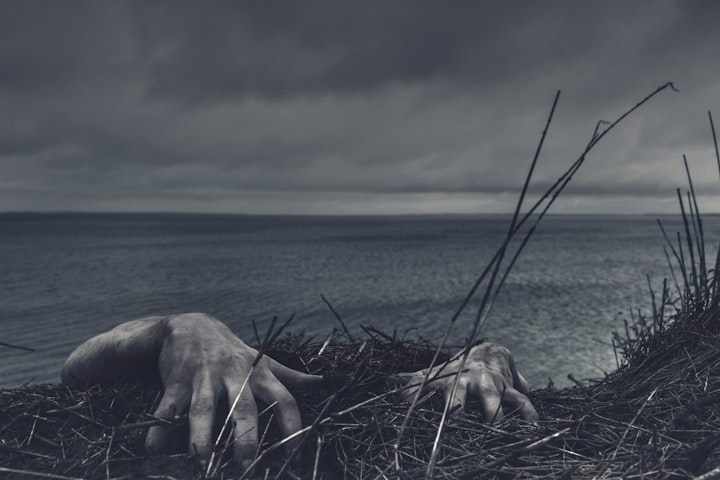A Filmmaker's Guide to Jordan Peele's 'Us' (2019) - Part 3
Subtleties and Their Usage

We can all agree that Jordan Peele's Us (2019) is quite possibly one of the best films of the last ten years and has potential to be one of the greatest movies of the 21st Century (but not the greatest, that space is saved for There Will Be Blood (2007), sorry Peele). Us (2019) is a brilliant movie in which subtleties reign supreme in exciting the audience's understanding of the film. Everyone guesses what everything means and so, we're going to look at some subtleties of our own and see how they're used to create meaning. This should be interesting seeing as, especially in horror film, these subtleties in usage are becoming evermore popular. If you'd like to start at the beginning of this series of articles, then please proceed to click here: https://vocal.media/horror/a-filmmaker-s-guide-to-jordan-peele-s-us-2019 - but you don't have to read the others in order to understand this article. They are entirely separate and can be read in any order at all. So once again, here's your spoiler alert if you haven't see the film. Let us get on with this article on the subtleties used in Jordan Peele's Us (2019).

Subtleties in the film can include basically anything, but if you did happen to read part 2 of this series then you'll see that we covered subtleties in very slight detail, but not as much as to dedicate an entire article to them. In this article, we're going to discuss these subtleties, how effective and subtle they are at delivering their message and what questions we can ask of the filmmaker who has presented them to us.
Subtlety 1: Shadows and Reflections
Shadows and reflections are used as subtleties throughout the film to present us with distance between the real and the tethered. Shadowing is a really creepy way of doing it because of the fact it shows the real and tethered directly connected together if we look at it through the lens of a symbol. Check it out in frame:

When we see the tethered, we see shadowing - it's only when we see the real family and shadowing (at the beach scene) that we know that the tethered are getting closer seeing as the 'shadows' are there. (As Red states in the film that the girl had a shadow' - we can assume that the bigger the shadow is the closer the tethered is). Seeing as, in this scene, the tethered's shadows are massive, almost never ending, we can also assume that they are directly in front of the family they seek. Reflections are used in a similar way because the tethered looks almost exactly like the real being and, with this, Jordan Peele can mix them up without the audience noticing. This is exactly what he does:
The point of this is simple, not only does is present the audience with a difference between light and dark, slowly bringing them together, it also presents the doppelgänger theory in more detail and more physical imagery. The audience therefore understand it better and make more sense of it when the actual plot begins taking place.
The questions we can ask of the filmmaker are:
- Are there any other meanings to shadows and reflections?
- How do the shadows and reflections propel the plot forwards and what was the motivation to use them over other symbols that commonly represent the same or a similar thing?
- Were the shadows and reflections initially by accident or were they purposeful at every point in the film?
Subtlety 2: Hands
Hands are a huge thing in the movie as we see hands everywhere. It is not that obvious what the hands represent, but we can assume that hands is how we connect as human beings. We can touch each other, hold hands, high five each other and thus, hands are the basic necessity for human engagement. Whenever we see hands in the movie, it is normally when one human is engaging with another and therefore, it proves to be effective. It does to job of being a clear and yet kind of confusing symbol. I call it a subtlety being that it isn't as obvious as the meaning of a rabbit. Take a look at this:

Here's the clip, look at how it shows connection:
Whenever we see hands as another point, there is always a tethered around. The clue is also in the name - the tethered - they are connected to the real one. To be connected to another person in a literally and very physical way is to hold hands with them and so, we see hands more often as the ending approaches. They become so frequent that when Adelaide and Red are in the place of the tethered, we see this:

Obviously as well, we have the one gloved hand which is directly representative of difference between the two (tethered and real, since the tethered has a gloved hand and the non-gloved hand on the tethered is representative of the 'real' self). And, of course, there's that Michael Jackson t-shirt at the beginning in which Michael Jackson was known (in the "Thriller" era especially) for his one-gloved hand.

Here's some questions we could ask of the filmmaker:
- What was the motive behind using hands?
- Is there some deeper meaning to the presentation of the hands and does the gloved hand have anything to do with it?
- Are the scissors directly representative of a cut connection through the use of hands?
Subtlety 3: Windows
Forget about shadows and reflections for a second and let us talk about windows. Eyes are the windows to the soul and since the tethered have no eyebrows, they lack the substance that gives them a soul. This is a direct representation. Windows allow us to see through things and so, they represent the way in which the real people can see their own reflections but see nothing past that. It serves the direct opposite purpose to what it actually is and thus, represents another opposite in the film. Another duplicity is really the last thing we require since this film is filled with them. But, it is so subtle that you cannot help but be entrapped by it when you actually pay attention.

When we think about windows in the film, we also think of the way in presents the 'safe' indoors and the 'unsafe' or rather, 'feral' outdoors. It also explains why most of the house owned by the character played by Elizabeth Moss in the film has many windows and is mostly made of glass.
Here are some questions we could ask of the filmmaker to do with this:
- Are windows representative of the real world, enclosed in its safe space, seeing and recognising the tethered?
- Were windows initially used for this purpose or are there other meanings behind them?
- Is there any significance in the way in which the windows are filmed and does it link to shadows and reflections in this way?
Conclusion:
So we have explored three good subtleties in the film and, as symbols, they are incredibly prominent and feature throughout. Be that as it may, they are not very well-known to those who have only watched the film once or twice. It is only upon third, fourth and fifth watches that we can really appreciate these strange, but quiet symbols littered throughout the film to add meaning to our experience.
Thank you for reading and good luck on your next project.
About the Creator
Annie Kapur
200K+ Reads on Vocal.
English Lecturer
🎓Literature & Writing (B.A)
🎓Film & Writing (M.A)
🎓Secondary English Education (PgDipEd) (QTS)
📍Birmingham, UK






Comments
There are no comments for this story
Be the first to respond and start the conversation.